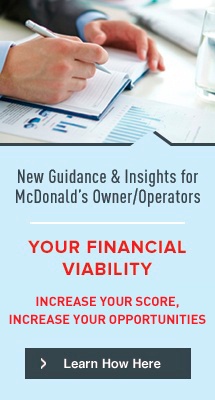 The concept of having to pay taxes is often times more than enough to make one go cross-eyed. “I’ve worked really hard all year and I have to give how much to Uncle Sam!?!”
The concept of having to pay taxes is often times more than enough to make one go cross-eyed. “I’ve worked really hard all year and I have to give how much to Uncle Sam!?!”
Add to that the potential of being charged interest and penalties for not giving enough to the government periodically throughout the year and you start to wonder why it is you’re even working at all.
While that is clearly hyperbole, the exercise of calculating the amount of estimated tax one is required to pay on an annual basis is confusing and requires an in-depth knowledge of the rules of the game.
Fortunately, the IRS has provided a method for avoiding potential penalties and interest charges due to underpayment of estimated taxes. This method is known as the safe harbor rules or exceptions.
Before we dive into the details of the safe harbor rules, let’s first take a quick look at who exactly is required to make estimated tax payments in the first place.
In order to keep the governmental machine running, taxpayers are required to pay their taxes as they go throughout the year, rather than wait and pay all at once when they file their annual tax returns. The vast majority of taxpayers comply with this rule almost unknowingly, in the form of federal and state withholding taxes in their regular paychecks. It is only when one earns income that is not paid via a paycheck and/or subject to withholding that they must concern themselves with making estimated tax payments.
 These are typically the owners of small businesses, specifically McDonald’s Owner/Operators, whose annual incomes are derived from their own business and are reported on form K-1 rather than on form W-2. The fact that the business income may vary from week to week, month to month, and year to year, makes figuring out how much estimated tax one needs to pay somewhat problematic. This is where the concept of the safe harbor comes into play.
These are typically the owners of small businesses, specifically McDonald’s Owner/Operators, whose annual incomes are derived from their own business and are reported on form K-1 rather than on form W-2. The fact that the business income may vary from week to week, month to month, and year to year, makes figuring out how much estimated tax one needs to pay somewhat problematic. This is where the concept of the safe harbor comes into play.
To determine whether one is required to make quarterly estimated tax payments, ask yourself the following questions:
- Do I expect to owe less than $1,000 in taxes for the tax year, after subtracting my federal income tax withholding from the total amount of my tax liability? If so, you're safe, i.e. you don't need to make estimated tax payments.
- Do I expect my federal income tax withholding to amount to at least 90 percent of the tax that I will owe for this year? If so, then you're in the clear, and you don't need to make estimated tax payments.
- Do I expect that my income tax withholding will be at least 100 percent of the tax on my previous year's return? Or, if your adjusted gross income on your tax return was over $150,000 ($75,000 if you're married and file separately), do I expect that my income tax withholding will be at least 110 percent of the tax I owed for the previous year? If so, then you're not required to make estimated tax payments.
If you answered no to all of these questions, you must make estimated tax payments. To avoid a penalty, your total tax payments (estimated taxes plus withholding) during the year must satisfy one of the safe harbor requirements just covered.
So if you’ve determined that you are required to make estimated tax payments, now you may be asking yourself, “Which safe harbor option should I choose?” The answer, of course, depends on your individual situation.
The safest option (no pun intended) to avoid underpayment penalties is to aim for 100% of your previous year's taxes. As mentioned above, if your previous year's adjusted gross income was more than $150,000 (or $75,000 for those who are married and filing separately), you will have to pay in 110% of your previous year's taxes to satisfy the safe harbor requirement. If you satisfy this safe harbor test, you won't have to pay an estimated tax penalty, no matter how much tax you may end up owing with your tax return.
If you expect your income this year to be less than last year and you don't want to pay more taxes than you think you will owe at year end, you can choose to the 90% option, which again will exempt you from any penalties and interest.
The goal, ultimately, is to avoid having to pay any undue penalties and interest to the IRS. The bite of your annual tax liability alone is painful enough.
Hopefully, after reading this you have a better understanding of the concepts of estimated tax payments and the “safe harbor” exceptions. If not, and even if you do, having a trusted CPA in your corner – who knows these rules inside and out – is almost certainly a must.




